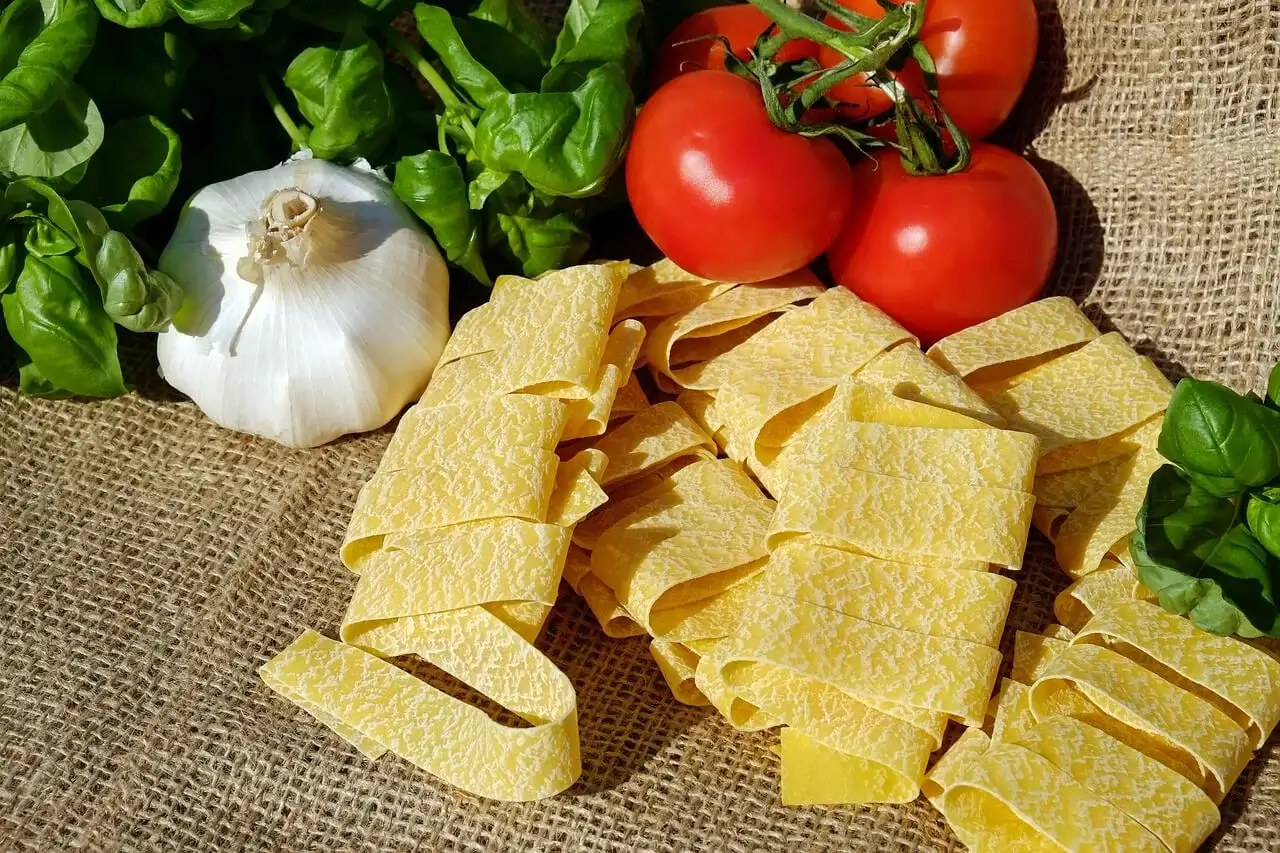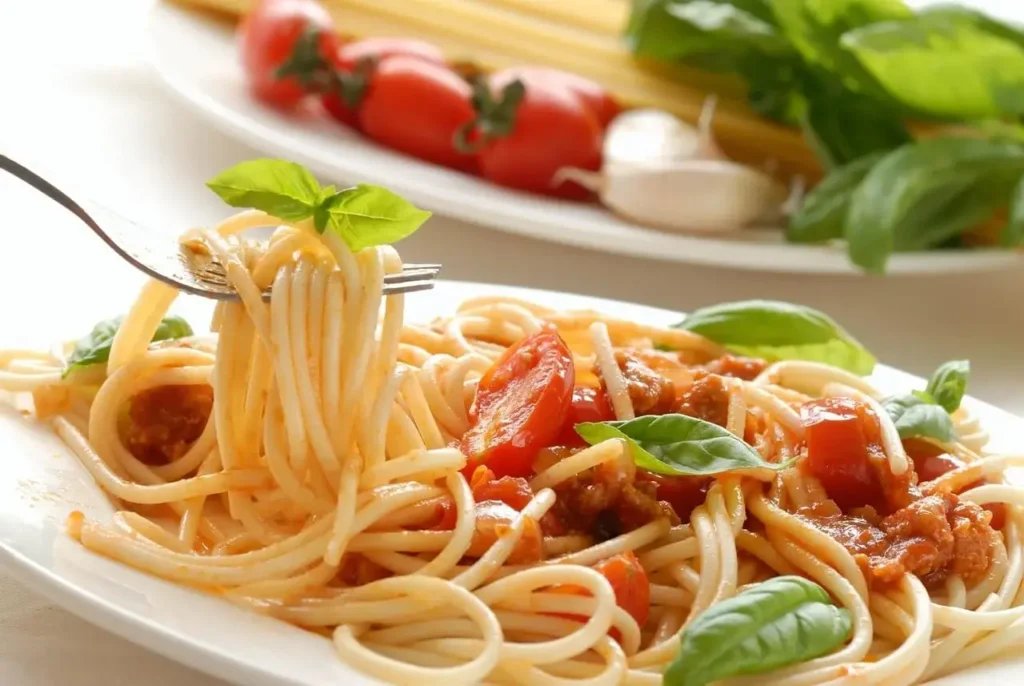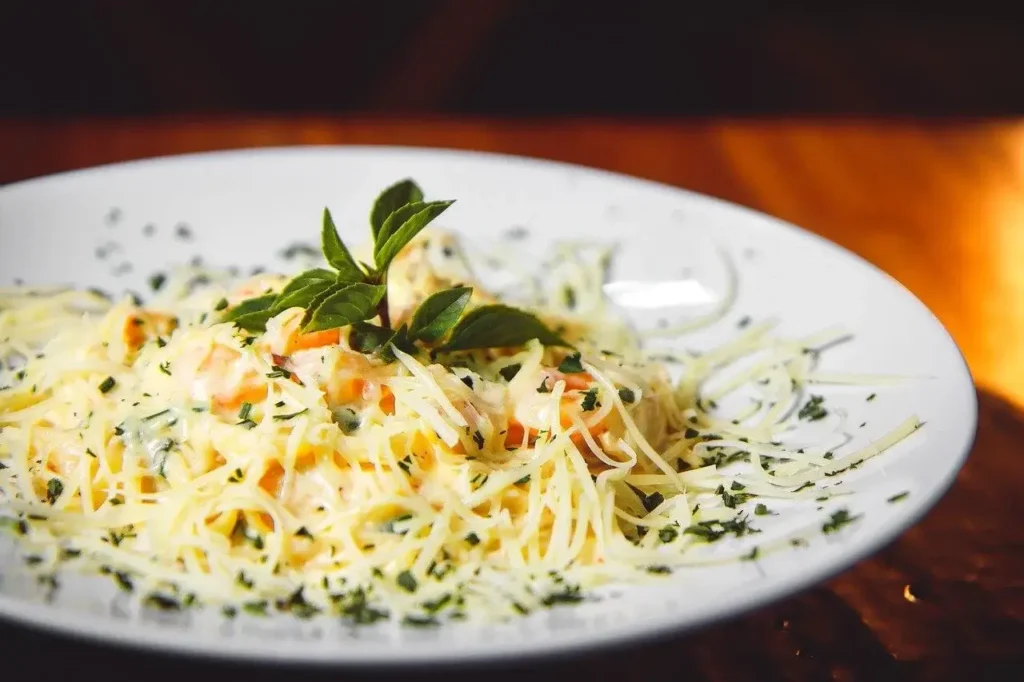Embarking on a culinary journey doesn’t mean sacrificing flavor for health. This detailed guide to low-sodium pasta dishes provides enticing recipes that satisfy your taste buds and promote heart health. Whether you’re controlling blood pressure or pursuing a healthier lifestyle, these pasta options ensure fulfillment without excessive salt. Dive into this article to discover how easy and delicious maintaining a low-sodium diet can be!
Introduction to Low Sodium Diets
Overview of Low Sodium Diet Benefits
Adopting a low sodium diet can work wonders for your health. Particularly, it’s a boon for heart and kidney functions. According to the American Heart Association’s dietary guidelines on sodium, reducing sodium intake can significantly lower the risk of heart diseases and stroke. That’s quite a compelling reason to watch your salt!
Reducing dietary sodium is particularly crucial for those with hypertension or prehypertension. It helps in managing blood pressure levels, thereby reducing the strain on the heart and blood vessels. Additionally, for individuals with kidney issues, a low sodium intake ensures that the kidneys aren’t overworked, preserving their function over time.
Transitioning to low sodium meals might seem daunting at first, but it’s easier than you think! By swapping high-sodium ingredients for healthier alternatives and spicing up dishes with herbs and spices, you can create mouthwatering meals that are both nutritious and low in sodium. Not to mention, this change can have a profound impact on your overall well-being, making every meal a step towards a healthier heart and a happier life.
Understanding Sodium in Pasta
Myths and Realities of Sodium in Pasta
Let’s bust some myths right off the bat! Many folks think pasta dishes are inherently high in sodium, but that’s not necessarily true. It’s not the pasta itself but rather the additions—like sauces and seasoned toppings—that can pile on the sodium. Plain pasta is relatively low in sodium, which makes it a fantastic base for crafting low sodium meals.
However, it’s crucial to be mindful of what you toss with your noodles. Store-bought sauces and prepared toppings often contain surprising amounts of sodium, intended to enhance flavor and extend shelf life. But don’t worry, we’re here to guide you through making healthier choices that keep the taste while cutting the salt!
High Sodium Ingredients to Avoid
When preparing pasta dishes, there are certain high-sodium culprits to steer clear of. Processed meats like sausages and cured meats, canned vegetables, and ready-made sauces can skyrocket the sodium content of your dish. Instead, opt for fresh or dried herbs, spices, and homemade sauces which allow you to control the amount of salt added.
Transitioning to low-sodium alternatives doesn’t mean you have to compromise on flavor. For instance, using a homemade marinara sauce with fresh tomatoes, garlic, and basil can deliver all the taste without the excess sodium found in many canned options. Furthermore, instead of adding salt to your pasta water, try a dash of spices or even a splash of vinegar to enhance the pasta’s flavor without upping the sodium content.
By being vigilant and creative in the kitchen, you can transform any pasta dish into a heart-healthy meal that’s both satisfying and low in sodium. So, let’s roll up our sleeves and continue to explore how you can incorporate these tips into your daily cooking routines!
Essential Ingredients for Low Sodium Pasta Dishes
Choosing Low Sodium Alternatives
Venturing into the world of low sodium cooking opens up a realm of culinary creativity. To embark on this healthy path, it’s crucial to familiarize yourself with the staples of low sodium pasta dishes. For starters, consider low-sodium or no-salt-added versions of common ingredients. Opt for fresh or dried produce over canned or processed versions, as these typically contain less sodium.
For example, instead of using regular canned tomatoes, look for those labeled “no salt added,” or better yet, use fresh tomatoes to make your sauces. Similarly, when it comes to broths and stocks, always reach for the low-sodium variants or consider making your own at home, where you have full control over the salt content.
Herbs and Spices for Flavor
Enhance flavor while reducing salt by using herbs and spices like basil, oregano, parsley, rosemary, thyme, garlic, and black pepper. Aromatic veggies like onions and shallots also add flavor and nutrients to pasta dishes.
These ingredients not only make pasta tastier but also support health goals. For example, garlic offers heart health benefits and lowers blood pressure. Mastering seasoning with herbs and spices makes reducing sodium delicious and achievable.
Stock your pantry with these essentials to create tasty, heart-healthy pasta dishes without compromising dietary goals. In the next section, discover popular low-sodium recipes using these ingredients for nourishing and delightful meals.
Popular Low Sodium Pasta Recipes
Recipe 1: Low Sodium Marinara Pasta
Embark on a flavorful journey with a classic Marinara Pasta that’s as simple as it is satisfying, and best of all, low in sodium! Start by sautéeing freshly chopped garlic and onions in a splash of olive oil until they’re golden and fragrant. Add chopped fresh tomatoes, a pinch of oregano, basil, and a dash of black pepper. Let the sauce simmer gently, allowing the flavors to meld beautifully. Cook your preferred pasta — be it spaghetti or penne — until al dente, and then toss it generously with the marinara sauce. Add a finishing touch with fragrant fresh basil leaves. This dish proves that you can enjoy the richness of Italian cuisine without the excess sodium.
Recipe 2: Heart Healthy Pesto Pasta
For those who adore a bit of green goodness, a Pesto Pasta might just be your new go-to dish. Begin by blending fresh basil leaves, garlic, pine nuts, and a handful of grated Parmesan cheese with a good drizzle of olive oil to create a lush, vibrant pesto sauce. The key here is to use unsalted nuts and cheese to keep the sodium content in check. Combine the freshly made pesto with cooked whole wheat pasta to add fiber to your meal. The result? A hearty, nutrient-packed pasta dish that uplifts your spirits and your health.
These recipes are not just delicious; they’re also a testament to how easy and enjoyable low sodium cooking can be. By focusing on fresh ingredients and robust flavors, these pasta dishes ensure that reducing sodium in your diet never means sacrificing taste. In the next section, we’ll explore some invaluable cooking tips that will help you perfect these low sodium dishes and more!
Cooking Tips for Low Sodium Pasta Dishes
How to Cook Pasta Properly
Cooking pasta might seem straightforward, but a few tricks can enhance both its flavor and health benefits—especially when you’re aiming to reduce sodium. First off, always use a large pot of boiling water. This helps the pasta cook evenly and prevents sticking without the need for oil or salt. While it’s traditional to salt the water, you can skip this step entirely. Instead, try adding a bay leaf or some garlic cloves to the water for subtle flavor enhancements that don’t contribute extra sodium.
Innovative Cooking Techniques
Beyond the basics, there are several innovative techniques to maximize flavor in low sodium pasta dishes. One effective method is to use low-sodium broth instead of water when boiling pasta. This infuses the pasta with a rich flavor from the start, eliminating the need for added salt later on.
Additionally, consider finishing your pasta by tossing it in a pan with your sauce. This technique, known as ‘marrying,’ allows the pasta to absorb the sauce’s flavors more deeply and can help enhance the overall taste without additional sodium. Remember, cooking is as much about texture as it is about flavor. To ensure your pasta remains al dente and full of life, monitor its cooking closely and always test a piece before draining.
Employing these strategies not only keeps your dishes low in sodium but also elevates their taste and quality. By focusing on fresh, flavorful ingredients and smart cooking techniques, you can create pasta dishes that are healthy, delicious, and satisfying. Now that you’ve mastered the basics and explored some recipes, let’s delve into dietary considerations and adaptations to ensure these dishes meet all your nutritional needs.
Dietary Considerations and Adaptations
Adjustments for Other Health Conditions
When crafting low sodium pasta dishes, it’s essential to consider other dietary needs that may need to be accommodated. For instance, individuals managing diabetes might need to focus on whole grain pasta options to help control blood sugar levels. Meanwhile, those with gluten sensitivities can opt for gluten-free pasta made from rice or quinoa.
In addition to adjusting pasta types, the choice of additional ingredients can be tailored to address various health concerns. For example, incorporating lean proteins like grilled chicken or tofu can enhance the dish’s nutritional profile without adding significant amounts of sodium. Similarly, adding a variety of colorful vegetables not only makes the dish more visually appealing but also increases its fiber and antioxidant content, supporting overall health.
Incorporating Into Various Diets
Low-sodium pasta dishes offer versatility, integrating well into various dietary plans, enhancing both appeal and nutrition. For Mediterranean diet followers, incorporating olive oil, fresh herbs, and seafood aligns with its focus on heart health and fresh ingredients.
Moreover, these dishes can be adapted for the DASH diet, aimed at managing blood pressure. Adding leafy greens, nuts, and beans aligns with DASH recommendations, creating delicious and healthful meals.
By considering these dietary factors and making thoughtful adjustments, pasta dishes can support health goals. Moving forward, we’ll address frequently asked questions about low-sodium pasta dishes to provide clarity and support in your healthful cooking endeavors.
FAQs About Low Sodium Pasta Dishes
What kind of pasta is low in sodium?
Interestingly, most plain dried pastas are naturally low in sodium, making them an excellent base for creating health-conscious meals. Opting for whole grain versions can add an extra nutritional boost, providing more fiber and nutrients than traditional white pasta. When shopping, it’s crucial to read labels carefully, as some flavored or ready-to-cook pasta varieties might contain added sodium.
Can I eat spaghetti on a low-sodium diet?
Absolutely! Spaghetti, like other pastas, is naturally low in sodium, which allows it to fit perfectly into a low-sodium diet. The key is in the toppings and sauces—choose homemade sauces with fresh ingredients and avoid pre-packaged versions which can be high in sodium. Incorporating fresh vegetables, herbs, and spices can enhance your dish without the need for salt.
Is there spaghetti sauce with no sodium?
Yes, you can find or make spaghetti sauce with no added sodium. Look for “no salt added” labels on canned products or make your own sauce using fresh tomatoes, garlic, and herbs. This not only controls the sodium content but also enhances the flavor, letting the natural sweetness of the tomatoes shine through.
What pasta sauce is good for high blood pressure?
Pasta sauces rich in antioxidants and low in sodium are best for managing high blood pressure. Tomato-based sauces made with fresh tomatoes, garlic, and olive oil are ideal as they contain potassium and antioxidants that are known to help lower blood pressure. Additionally, avoiding sauces with added salts or cheeses helps keep the sodium count down, making it a healthier choice for those monitoring their blood pressure.
By addressing these common questions, you can feel more confident in incorporating low sodium pasta dishes into your diet. Remember, managing sodium intake doesn’t mean you have to sacrifice flavor or enjoyment in your meals. With the right ingredients and a bit of creativity, you can enjoy delicious, heart-healthy pasta dishes that benefit your overall health.



